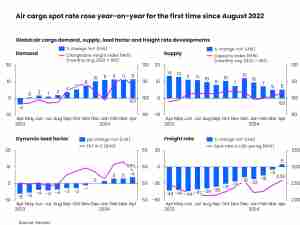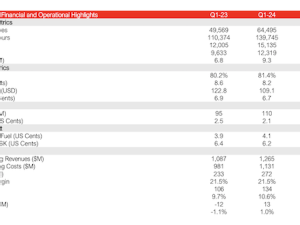U.S. Airline Employees Headcount (Full-time and Part-time Employees)
U.S. airline industry (passenger and cargo airlines combined) employment increased to 745,836 workers in March 2022, 6,546 (0.89%) more workers than in February 2022 (739,290) and 7,546 (1.0%) fewer than in pre-pandemic February 2020 (753,382).
U.S. scheduled-service passenger airlines employed 489,394 workers in March or 66% of the industry-wide total. Passenger airlines added 6,957 employees in March for an eleventh consecutive month of job growth dating back to May 2021. Delta Air Lines led scheduled passenger carriers, adding 1,450 employees; American Airlines added 1,447 employees, and United Airlines added 1,341. U.S. cargo airlines employed 276,855 workers in March, 37% of the industry total. Cargo carriers lost 374 employees in March. FedEx, the leading air cargo employer, decreased employment by 479 jobs.
U.S. Airline Full-Time Equivalents (FTEs)
BTS calculates FTEs by dividing the number of part-time employees by 2 and adding that figure to the number of full-time employees. The March industry-wide numbers include 637,431 full-time and 108,405 part-time workers for a total of 691,634 FTEs, an increase from February of 6,413 FTEs (0.94%). March’s total number of FTEs remains just 0.37% below pre-pandemic February 2020’s 694,210 FTEs.
U.S. cargo airlines employed 247,151 FTEs in March, down 217 FTEs (0.09%) from February. U.S. cargo airlines have increased FTEs by 15,378 (6.63%) since pre-pandemic February 2020.
The 27 U.S. scheduled passenger airlines reporting data for March 2022 employed 440,542 FTEs, 6,281 FTEs (1.45%) more than in February 2022. March’s total number of scheduled passenger airline FTEs remains 17,795 FTEs (3.88%) below pre-pandemic February 2020. Data by passenger carrier category can be found in the accompanying tables.
The March 2022 figure is the highest industry headcount since the start of the COVID-19 pandemic, and the employment deficit between March 2022 and February 2020 is the smallest difference in corresponding-pre-pandemic month employment since April 2020. That is even more noteworthy given that February 2020 had the highest February headcount in BTS records going back to 1990.










